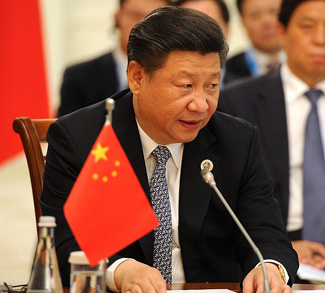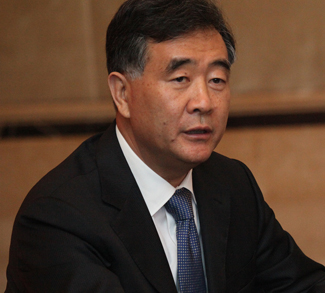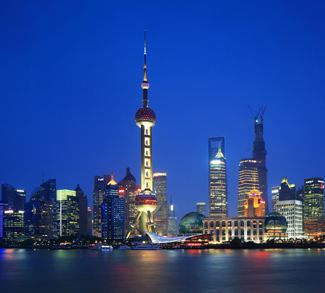Since the early 1990s, China’s remarkable economic growth has led to a dramatic increase in its domestic energy needs, prompting its state-owned national oil companies (NOCs) to embark upon a worldwide search for oil and gas reserves. This strategy has been successful in diversifying import sources and satisfying the demands of a growing economy, yet at the same time has increased dependence on politically-unstable suppliers in Africa and the Middle East. Within the last decade this has raised concerns in Beijing, leading the Chinese government to focus on locating reserves and improving energy infrastructure closer to home in Southeast Asia, placing neighboring Myanmar at the heart of its ambitious strategy to ensure energy security for generations to come.
China has been the dominant external actor in Myanmar’s fast-growing energy sector since the mid-2000s, tempted by the opportunity to build and finance projects on its doorstep in a previously military-led authoritarian country where many Western governments refused to operate. Despite the introduction of reforms in Myanmar since 2011, the partnership between the two countries appears to have grown stronger, with stable bilateral relations based on trade, investment, and energy co-operation. However, since pro-democracy activist Aung San Suu Kyi was elected Myanmar’s de-facto leader in the historic election of November 2015, many have highlighted the country’s sensitivity towards China’s growing influence in the region. At present, it can be questioned whether China will retain its leading role in Myanmar’s lucrative energy sector, amidst uncertainty over Chinese-financed projects and growing competition from India and the West.
In terms of China’s energy security, Myanmar is of vital geostrategic significance given its access to the Indian Ocean and Andaman Sea. China sought to take advantage of Myanmar’s potential as an overland transportation route through launching the China-Myanmar Oil and Gas Pipeline project, which began construction in 2009. The initial agreement was signed in 2008 between China’s National Petroleum Corporation (CNPC) and Myanmar’s Ministry of Energy; it sought to build a US$2.3bn crude oil pipeline and a US$2bn natural gas pipeline spanning the length of the country, running from ports on the west coast to mainland China. With both projects now completed, the natural gas pipeline extends for 793km to Yunnan province, transporting gas from the Shwe natural gas fields off the Arakan Coast. China was awarded exclusive purchasing rights back in 2008, as part of an agreement to export 6.5tn cubic feet of natural gas from the Shwe fields to China over the next 30 years. The oil pipeline is also now operational, running parallel to the gas pipeline and covering a distance of 771km, transporting oil from the Middle East and Africa to Southwest China.
The completion of the work in 2013 can be viewed as a crucial step in China’s broader energy diversification strategy, enabling China to overcome the vulnerability associated with having to ship vital energy resources through the narrow Malacca Strait and the contested waters of the South China Sea. Instead, the pipelines provide an alternative land route for China’s valuable oil and gas imports. The Myanmar oil pipeline alone transfers 22 million tons of crude oil annually, accounting for more than 10% of China’s total oil imports. The gas pipeline supplies 10 billion cubic metres of natural gas to China per year, whilst Chinese investment in Myanmar’s production facilities will increase total natural gas production in the country to 24 billion cubic meters by 2020.
The project has been described as ‘win-win’ by politicians and oil industry executives in both countries, through deepening regional integration and providing further economic opportunities. A road and railway is expected to be built along the length of the pipelines, enhancing connectivity and economic interaction between Myanmar and China’s southern provinces. In particular, the project will bring development opportunities to China’s landlocked provinces of Yunnan and Sichuan, helping to alleviate energy shortages and reduce the cost of petroleum. The pipelines have also brought mutual benefits in terms of bi-lateral trade. According to the Chinese Ministry of Commerce, bi-lateral trade increased from US$29.1bn to US$44.4bn in the year after construction on the two pipelines began, with 40% of the total being between Myanmar and Yunnan province. The new infrastructure will also help Myanmar reduce its dependence on Thailand as a resource export market and as a source of Foreign Direct Investment (FDI), with China providing a huge challenge to Thailand’s long-term position as Myanmar’s most important trading partner. Myanmar’s own energy security is also set to be enhanced, as under the terms of the agreement Myanmar is entitled to use two million tons of the transported crude oil per year for its own domestic consumption.
Overall, despite the challenges posed in recent years, China retains significant leverage and influence in Myanmar’s energy sector.
Whilst the project has undoubtedly been a huge success for both China and Myanmar, it is important to also consider the development of Myanmar’s energy sector as part of a larger picture, involving competition between Asia’s two economic giants: China and India. India has a similarly strong geostrategic interest in Myanmar, which is rapidly emerging as the center point in a battle between the continent’s two economic powerhouses to secure energy resources for their burgeoning populations. India and Myanmar share a land border more than 1,600km in length, whilst both of their coastlines outline the Bay of Bengal. Myanmar’s location is vital to the realization of India’s ‘Look East’ policy, through which it is seeking to reorient its foreign policy towards East Asia in an attempt to counter-balance China’s growing influence, whilst achieving a greater level of energy security. In the same way that China aims to use the pipelines to unlock its southwestern provinces, India sees the potential to develop its isolated northeastern region by improving links with neighboring Myanmar.
Myanmar’s energy sector has now emerged as a clear marker of the growing rivalry between China and India, with both countries anxious to secure new hydrocarbon reserves and take advantage of overland transportation routes to the Indian Ocean. It is China however which has emerged the victor so far. Prior to the construction of the pipelines, an intense bidding war between the two nations had developed over gaining exclusive rights to the lucrative A1 and A3 blocks in the Shwe gas fields, which were eventually awarded to China in 2008. China was able to outmaneuver India through its sheer financial clout and greater experience in the global energy industry, establishing an early advantage over its rival and gaining a decisive foothold in Myanmar’s energy sector.
Aside from competition over Myanmar’s resources with other states, China is also facing mounting difficulties in relation to some of its ongoing projects within Myanmar. The pipeline project itself had considerable challenges which needed to be overcome, not to mention the high cost of the project at more than US$5 billion. Additionally, the pipelines had to travel across diverse terrain and through areas of persistent ethnic conflict, whilst always being at risk of causing public discontent due to a lack of direct benefits or job opportunities for local people.
Away from the oil and gas sector, the Myitsone Dam hydroelectric project has been far more controversial. The project on the Irrawaddy River was due to generate up to 6000 megawatts of electricity for Yunnan province and was scheduled for completion in 2017, yet was dramatically cancelled by former president Thein Sein in 2011, after intense pressure from various interest groups. Opponents criticized the project over concerns of irreversible environmental damage, whilst also raising concerns over the livelihoods of the thousands of people who would have been permanently displaced. The project remains suspended amidst allegations of corruption and a lack of transparency, typifying the wider concerns of the Myanmar people over Chinese-sponsored projects across the country. Their argument is often reinforced by the fact that power shortages are still common in Myanmar, whilst 90% of the electricity generated by hydroelectric projects is exported to China and neighboring Thailand.
The 2012 closure of the Letpadaung copper mine in Myanmar’s northwest further raised public alarm over Chinese involvement in the country’s energy industry. The mine was shut down following concerns over environmental damage, yet was allowed to re-open in March 2013 after a parliamentary commission led by then-opposition leader Aung San Suu Kyi carried out an investigation into its operations. Critics cited the commission’s report – which gave the go-ahead for the mine to re-open – as a clear example of the government’s refusal to stand-up to Chinese firms.
Despite the continuation of widespread Chinese involvement in the mining, hydrocarbon and hydroelectric power sectors, an increasing number of Chinese-backed projects across Myanmar are in a state of political uncertainty. The introduction of reforms in recent years has ushered in a period of increased transparency requirements, exposing the often corrupt nature of previous arrangements and creating an environment in which the public is more willing to criticize and protest against Chinese-funded projects.
Now that the National League for Democracy (NLD) – led by veteran pro-democracy campaigner Aung San Suu Kyi – has assumed power, the involvement of China in Myanmar’s energy sector has come under even greater scrutiny. The eyes of policymakers and analysts around the world are focused on whether the new Myanmar will seek to either distance itself from its giant northern neighbor, or alternatively decide to spark an era of enhanced co-operation with Beijing.
Whilst Myanmar’s new NLD-led government was only formed in March, so far it has appeared willing to cautiously embrace renewed engagement with China. In August, Aung San Suu Kyi made an official five-day visit to Beijing – her first visit to a major capital outside of ASEAN since becoming Myanmar’s leader. During the visit, the two countries signed an agreement to enhance co-operation between energy departments, whilst Myanmar’s government announced that it had set up a 20-member parliamentary commission to review the Myitsone Dam suspension, and also to investigate other on-going and proposed hydroelectric projects across the country. The announcement is a signal that Myanmar is now more flexible with regard to its position on the US$3.6 billion Myitsone Dam project, and is open to the potential of either re-starting the project in the future or accepting a series of smaller scale projects as an alternative.
During the visit, Aung San Suu Kyi – who is officially Myanmar’s foreign minister owing to a controversial constitutional clause that prevents her from being named president – met with Chinese Premier Li Keqiang. Both leaders talked of ‘mutual respect’ between the two countries and spoke in favor of ‘pragmatic co-operation’ to achieve win-win results. Whilst Ms. Suu Kyi has advocated a ‘neutral’ foreign policy approach, she labelled ties with China as ‘highly valued’ and said that Myanmar would ’promote further energy co-operation’ between the two nations. Myanmar’s new political era may only be in its initial stages, yet it appears that despite being wary of getting too close to Beijing, the country’s leaders recognize the economic necessity of working together and the opportunities that may arise from Chinese investment – especially when it comes to energy.
Overall, despite the challenges posed in recent years, China retains significant leverage and influence in Myanmar’s energy sector. In contrast to a decade ago, Chinese companies are operating in an environment characterized by heightened competition, greater transparency, and a higher degree of public scrutiny; yet Chinese-sponsored projects in Myanmar’s energy sector look set to continue. Due to the two countries’ relative geographical size, population, and economic capabilities, the relationship between China and Myanmar is inevitably going to remain asymmetrical, yet it must be recognized that China is providing Myanmar with much-needed hard infrastructure, creating a mutually-beneficial economic relationship and integrated energy partnership that will drive development across Myanmar and in China’s southwestern provinces.
The Oil and Gas Pipeline Project in particular has significantly strengthened bi-lateral relations, based on the need for greater mutual energy security and sustained by a deliberate strategy of long-term energy diplomacy on the part of China. However, the project can also be viewed as a key component in a wider vision: that of regional economic integration and energy inter-dependence in Asia. ASEAN has proposed the construction of a trans-ASEAN gas pipeline network by 2020, whilst India has ambitions to invest in energy infrastructure across the sub-continent. In this context, the China-Myanmar pipeline project could eventually constitute a vital part of a future regional energy complex, based on a large-scale integrated pipeline network which may be essential for meeting the future energy needs of China, India, and the surrounding region. Whilst the exact nature of the future regional energy landscape remains uncertain, it is clear that Myanmar – as a resource-rich and geo-strategically important state nestled between Asia’s two largest economies – will continue to occupy a central position in regional energy diplomacy for decades to come.
The opinions, beliefs, and viewpoints expressed by the authors are theirs alone and don’t reflect any official position of Geopoliticalmonitor.com.




